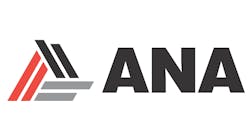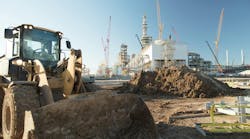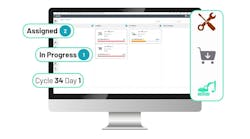Rental Revenue Jumps 9.7 Percent in Q4 for Baird/RER Equipment Rental Survey Respondents
Average rental revenue increased 9.7 percent year over year in the fourth quarter of 2022, a decline compared to last quarter when year-over-year growth was 12.2 percent, according to respondents to the quarterly Baird/RER Equipment Rental Survey. Although still strong, this marks the third consecutive quarter of decelerating growth, compared to double-digit growth in 2021. Commentary from respondents reflected more cautious expectations.
The fourth quarter of 2022 was in line with expectations for 51 percent of respondents, with 43 percent seeing better-than-expected results (12 percent saying ‘much better’ results) and only 6 percent seeing worse than expected results. The net 37-percent positive is improved from the previous survey.
“There were a lot of megaprojects already in the works when interest rates became volatile that are carrying the markets right now,” noted one respondent. “As small-to-mid size projects wrap up we are closely watching if they are being backstopped with new projects,” said one respondent.
“Market continues to remain strong but Residential is showing cracks,” said another.
“Interest rates increasing will slow nonresidential construction with industrial market improving,” added a third.
Fleet utilization for the quarter was 65.9 percent among respondents, compared to 67.9 percent in the third quarter. The utilization rate for access equipment rose to 67 percent from 62.6 percent in the fourth quarter of 2021. Meanwhile the utilization rate for earthmoving equipment increased to 67.5 percent compared to 62.8 percent in Q421. Small iron utilization rose almost 900 basis points from 51.7 percent a year ago to 60.4 percent.
Average rental rates increased 3.8 percent year over year, slightly lower than the previous three quarters when the increases ranged from 4.4 to 4.8 percent. Growth in rental rates is expected by respondents to remain solid in 2023, expected to increase 4.4 percent in 2023. Despite the increases, there was increased commentary from respondents regarding rental rates, with some respondents criticizing other companies, particularly larger ones, of lacking rate discipline.
Single digit revenue increases expected by most
Respondents are generally positive about demand in 2023; respondents expect a 5.7 percent revenue increase in the first quarter of 2023. Thirty percent of respondents expect a 1 to 5 percent year-over-year revenue hike, with 33 percent predicting a 5-to-10 percent increase and 17 percent expecting a 10- to-15 percent jump. Average rental revenue expected is up 8.5 percent in 2023, which is similar to last quarter’s forecast. Steady demand from end markets is expected to continue, partially offset by equipment and labor shortages.
“While the second half of 2023 will likely slow down, we still have a lot of demand now and expect that high demand to continue throughout the first half of 2023,” said one respondent.
“Besides residential construction decreases, where is the slowdown?” said another. “Most of our commercial customers have a heavy workload spanning into 3Q23,” added another.
The cost of new units increased 6.1 percent in the fourth quarter, similar to the previous quarter but down somewhat from the previous three quarters, when the increase ranged from 6.6 to 7.2 percent.
The average fleet size among respondents increased 4.5 percent year over year in the fourth quarter. Units increased about 4.5 percent for access equipment, small iron and others, while the fleet size for earthmoving units increased by about 6.5 percent.
Fleet purchases to continue rising
Respondents expect fleet purchases to jump 8.7 percent year over year during the next six months. Access equipment spending is expected to leap 11.9 percent over the next six months, with earthmoving equipment spending up 8.3 percent, small iron 5.5 percent and “other”, 6.8 percent. Commentary indicates respondents would expect to spend more if more machines were available. For 2023, respondents expect fleet expenditures to increase 7.4 percent compared to a 6.6-percent jump in last quarter’s survey.
Looking at expectations for end markets, 88 percent of respondents expect the municipal/government end market to remain healthy or improve in 2023, and 85 percent have favorable expectations for nonresidential construction. About 75 percent have favorable expectations for the oil & gas industry; 73 percent for infrastructure/pipelines; and 66 percent for industrial and manufacturing. The consumer/homeowner markets are viewed favorable by 38 percent compared to 58 percent a year ago, while the residential construction market is viewed favorably by 12 percent compared to 80 percent a year ago.








